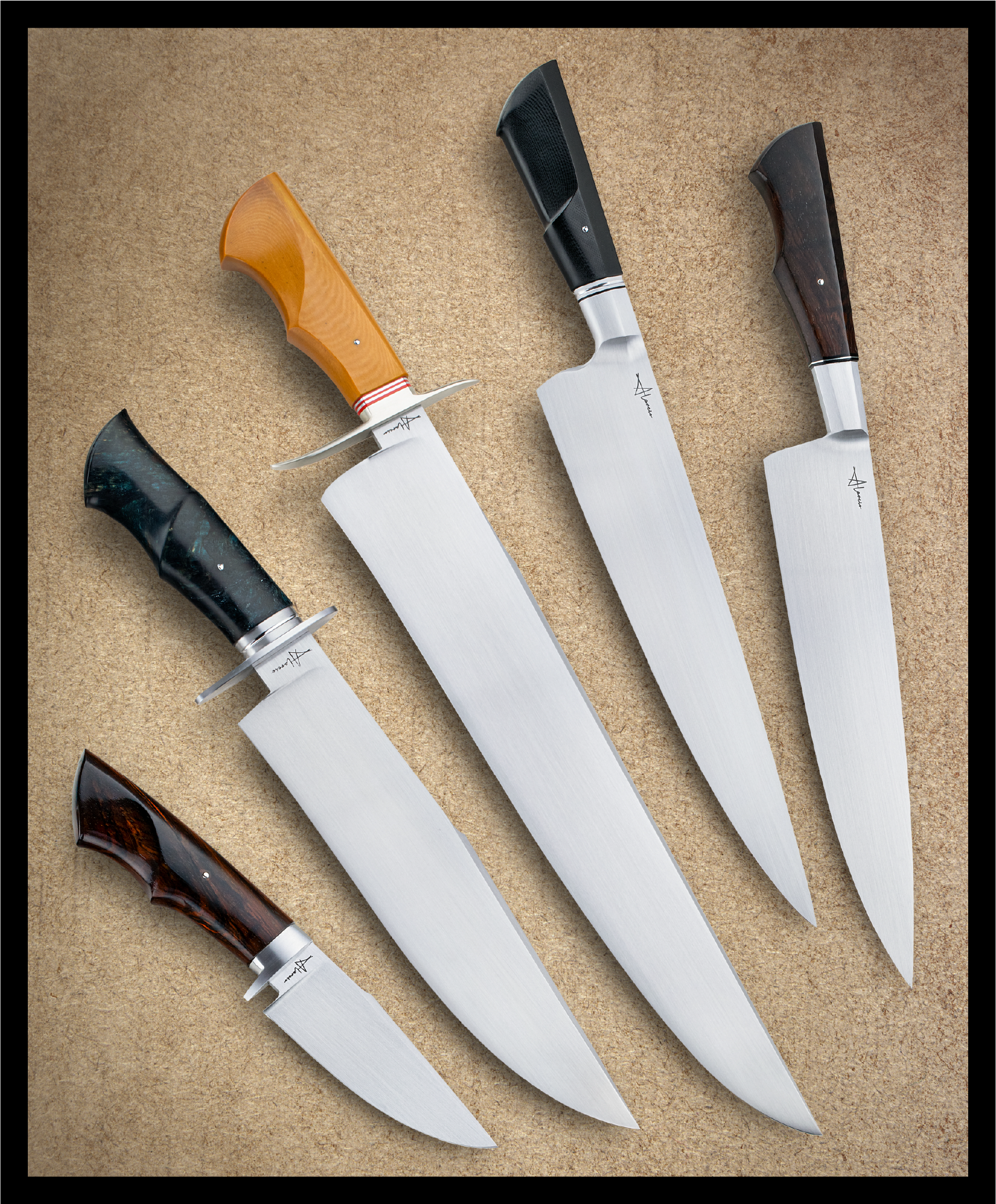Custom, heirloom quality knives for your home and your adventures
I made my first knife out of an old file in 2013. The satisfaction that came from completing that first blade was incredible. I went on to take some blacksmithing classes at a local museum and started seriously making knives in the summer of 2014 when I attended the ABS Intro to Bladesmithing class in North Carolina. I soaked up the knowledge of Mastersmith Jim Crowell like a sponge and as soon as I returned home to California I began forging my own blades in earnest. My knives have come a long way since 2014 and I just recently attained the rating of Journeyman Smith with the American Bladesmith Society. The next step in my own personal bladesmithing journey will be to attain the rating of Mastersmith, a test I hope to pass in the next 3-5 years.
Luckily, I'm fortunate enough to have a wonderful family who tolerates my obsession and for that I am eternally grateful.
I also feel gratitude toward you. For taking an interest in my work. For allowing me to push the boundaries of my own creativity. For commissioning me to make you more complex and and interesting blades.
Hope to hear from you soon
-Cameron
How to care for your new custom knife
Thank you for purchasing one of my knives! It brings satisfaction to my soul knowing that something I created is bringing happiness to another person.
I work with both high carbon and stainless steels. Each of them has advantages and disadvantages. Knowing what type of steel your knife is made from is essential to taking proper care of it.
Stainless knives are just that, they will resist corrosion on the face of the blade due to the high (at least 12%) chromium content. They are resistant to the harmful effects of water and acids, but are not immune. NEVER, EVER, put this knife in the dishwasher or "let it soak" in the sink.
High carbon knife owners:
First of all, No! there is nothing wrong with your knife. the, at first colorless, stains you see on the blade is the patina starting to form. It will not harm the knife, eventually it will help to protect it from rust. If any water or acidic foods are left on the surface, it may cause rust, simply remove it with a scotchbrite pad. If the pattern in your damascus knife has faded, first give it a good hand buffing with a sunshine cloth. If it still needs some work, you can bring it back to life by polishing with extremely high grit sandpaper 2000+ is recommended.
Regardless of the steel and usage, every knife will dull over time. The use of end grain wood cutting boards will slightly extend the life of your blades sharpness, but when it is time to sharpen, I recommend using whetstones. I will also happily sharpen any knife made by myself.
Please do not ever hesitate to get in touch with me if you have any questions or have any issues with your knife.
······················•✦•······················
Most of our artworks are limited & one of a kind. If you’d like first dibs, sign up for our monthly newsletter.
If you’d like to start a conversation about something custom, send us a message here
························•✦•····················













